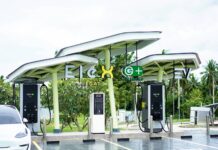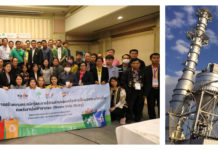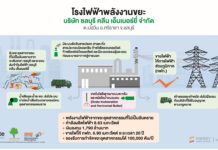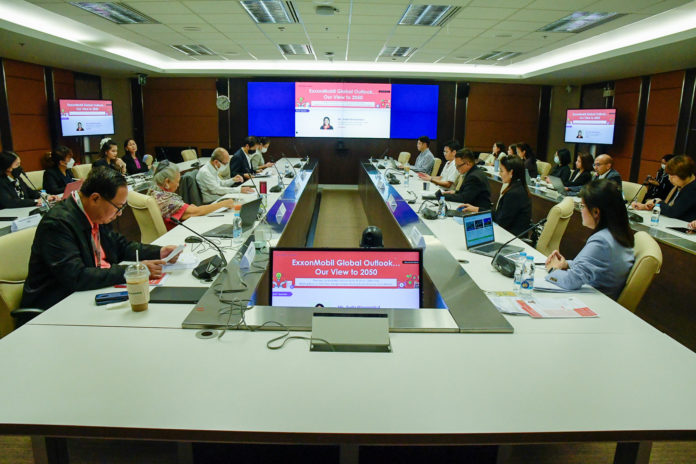The Global Outlook forecasts the world’s population increases by 2 billion people in 2050, up 25% from today, and the global economy doubles, uplifting the global demand for energy by 15%. Emission is expected to decline by 25% in 2050. Still, more aggregate is needed to limit the warming to below 2 Degrees Celsius; therefore, the outlook concluded that advanced technology and supporting public policy plus market-driven solutions are key to achieving the energy transition and the net zero emission goals.
At a recent public lecture by the Petroleum Institute of Thailand, Suda Ninvoraskul, Country Manager and Managing Director, ExxonMobil Limited, presented ExxonMobil Global Outlook: Our View to 2050 to online and onsite audiences.
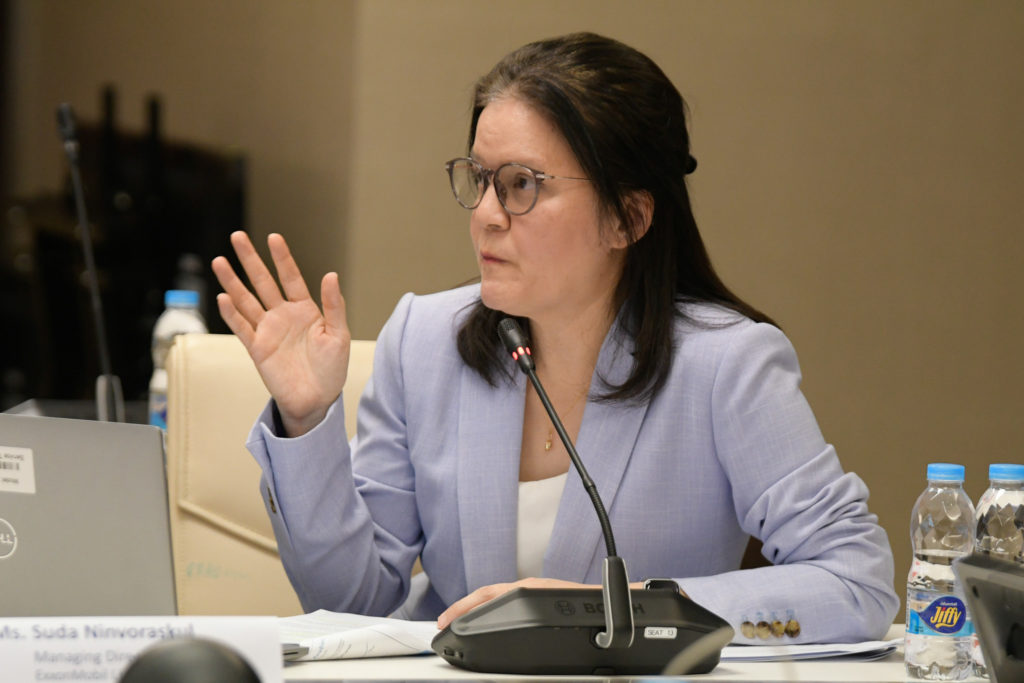
ExxonMobil forecasts the world’s population rose 25% to about 10 billion people in 2050, and the global economy doubles. These two factors lead to the need for 15% more energy to help improve the quality of their lives, many of whom are in the developing world.
In the meantime, climate issues and the goal for net zero emission see the power generation shift to a lower carbon supply mix.
However, oil and natural gas are projected to play a key role in meeting more than half of the world’s energy needs, provided renewable energy development is unlikely to grow fast enough to undertake most of that forecasted demand despite the fact it will grow significantly, Ms. Suda pointed out a part of the outlook.
Oil use is expected to fall significantly in personal transportation. However, oil is still essential for the industrial processes, commercial transportation, and infrastructure that spur economic growth. The outlook stated that growth in these uses will largely offset the decline in oil used in light-duty vehicles for personal transportation.
Meanwhile, demand for natural gas is expected to expand to meet the needs of industrial activity and electric grids, thanks to its reliability and lower-emissions option.
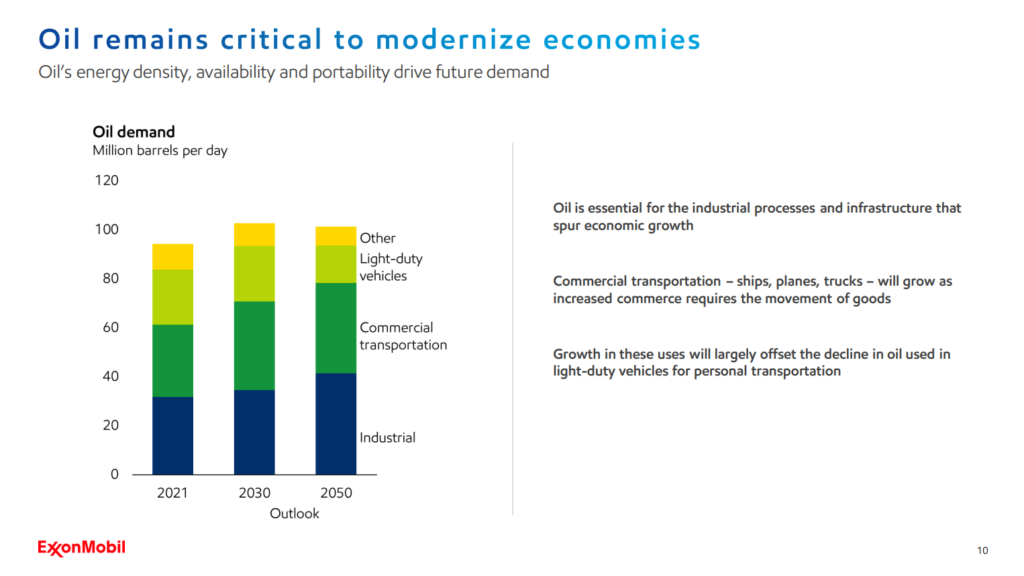
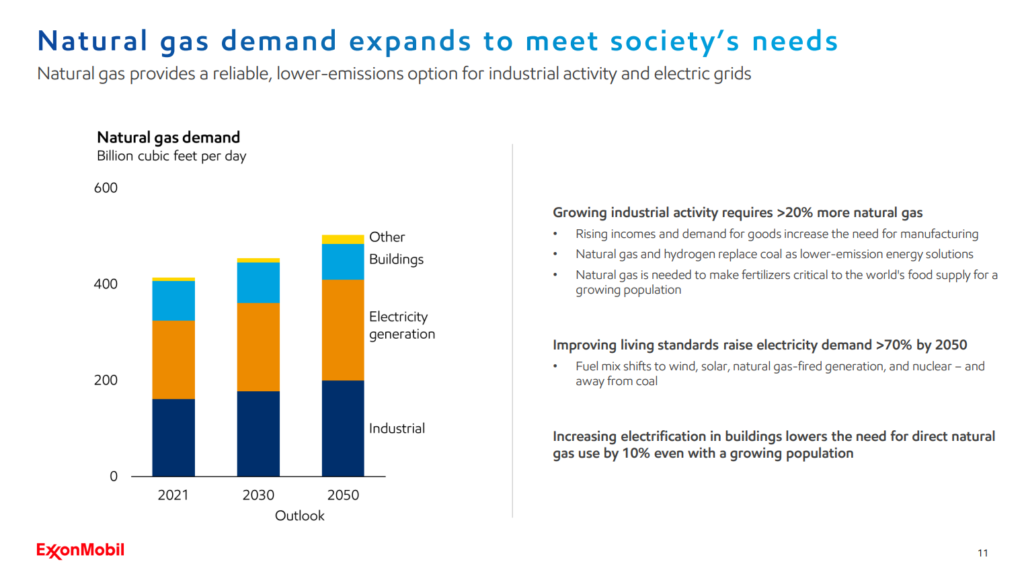
–
At the end of the lecture, Ms. Suda pointed out three key drivers to a successful transition: technology advances, public policy support, and market-driven solutions.
For technology, the government cannot pick winners and losers as the all-of-the-above approach to technology will lead to the most cost-efficient solutions. More R&D by governments, universities, and companies is needed.
Clear and consistent public policy is also needed to incentivize investment in lower-emissions solutions. Streamline permitting for building new solutions and the needed infrastructure are also included.
Finally, to achieve global emission-reduction goals, the world needs to develop an economy that values and pays for emission reduction on a full lifecycle basis. The economy will need a transparent carbon price to incentivize consumer behavior, and spurring carbon markets has to be undertaken.
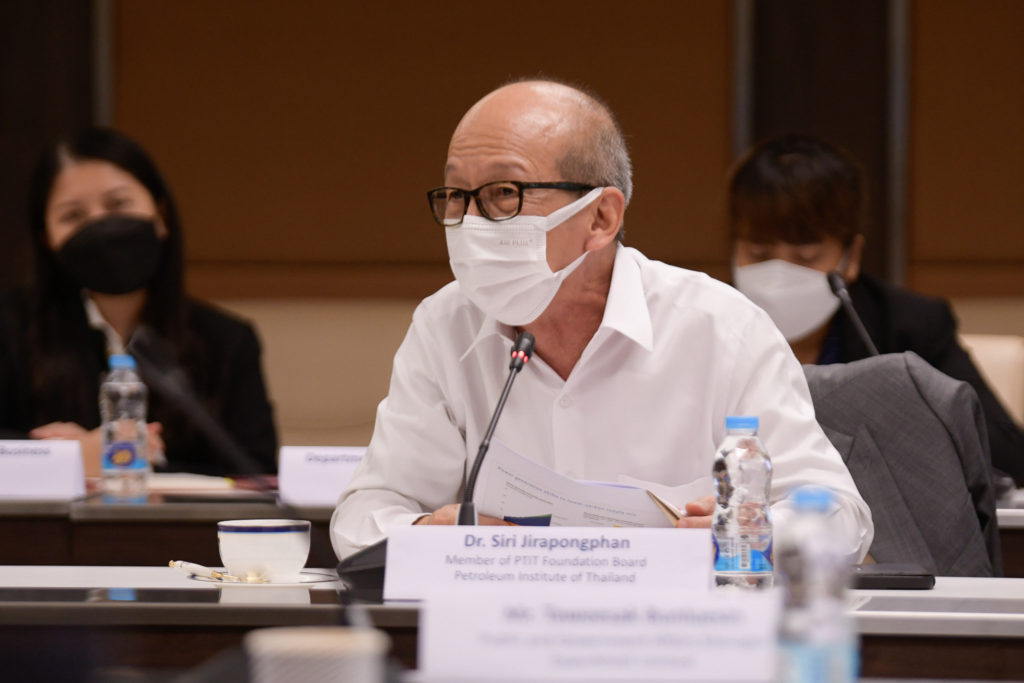
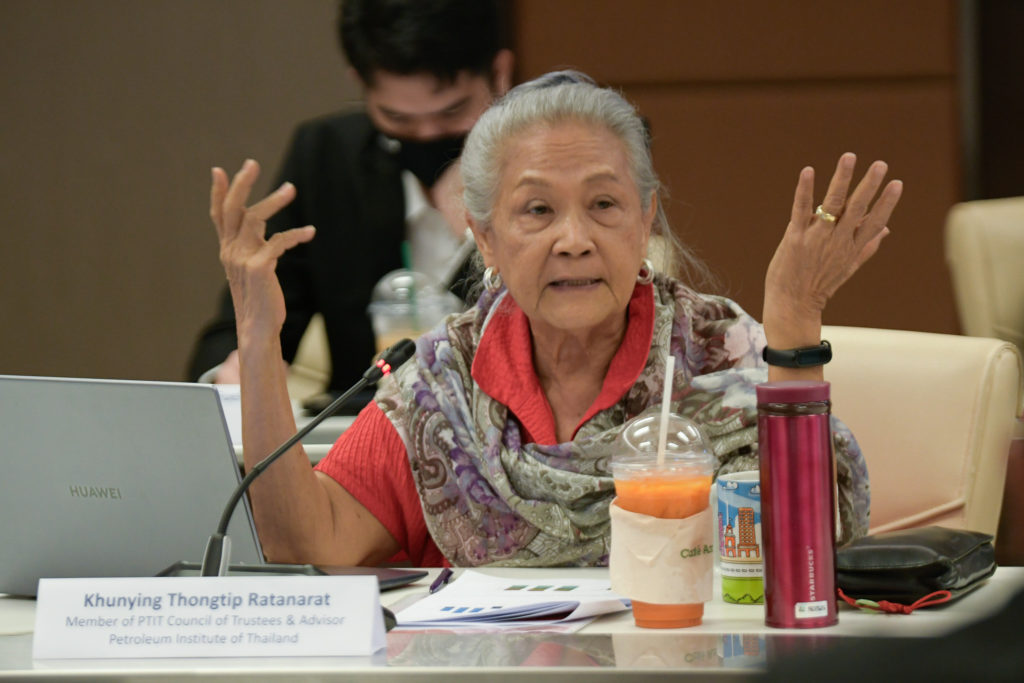
–
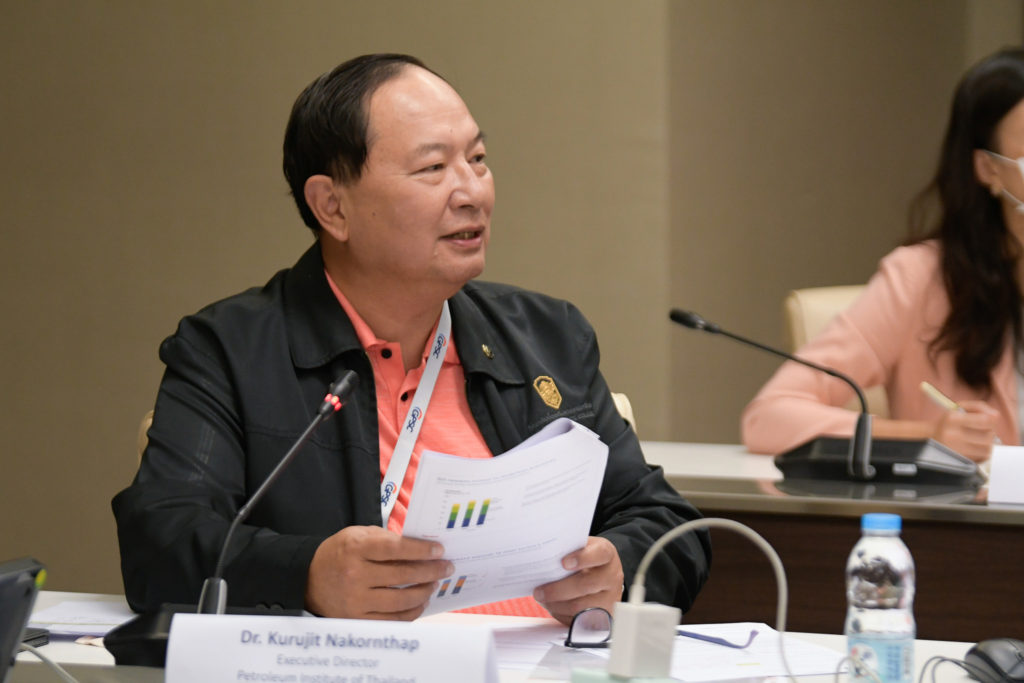

–
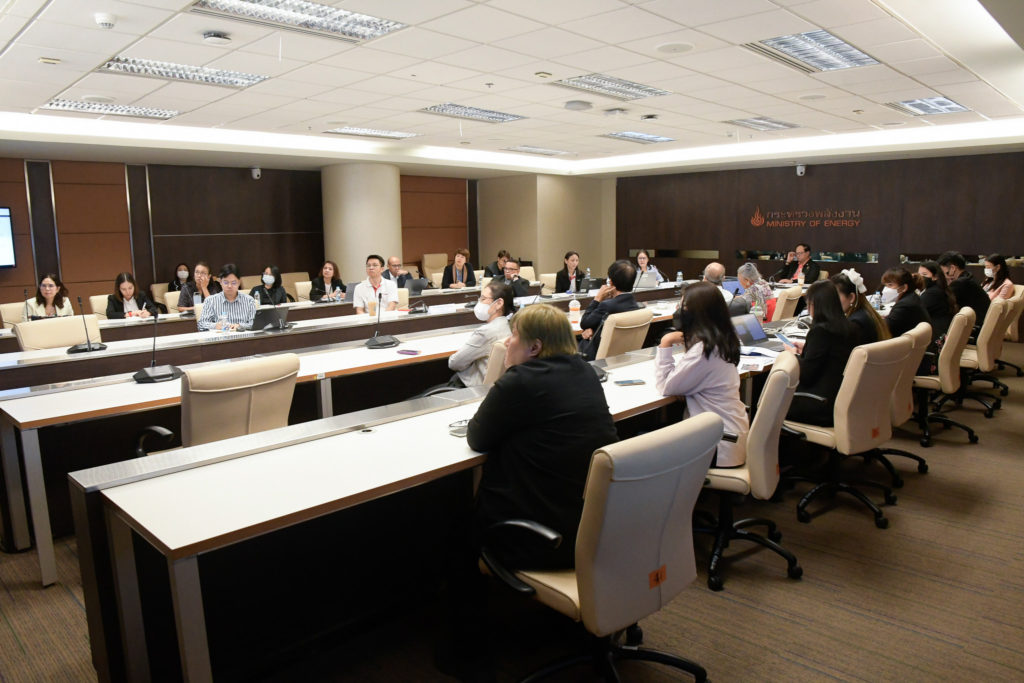
–










